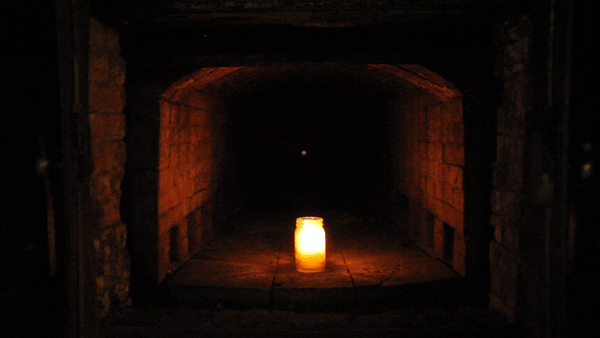
On a dark and spooky night, just like tonight, Sue Horner led a group of Denverites into Riverside Cemetery, the city's oldest.
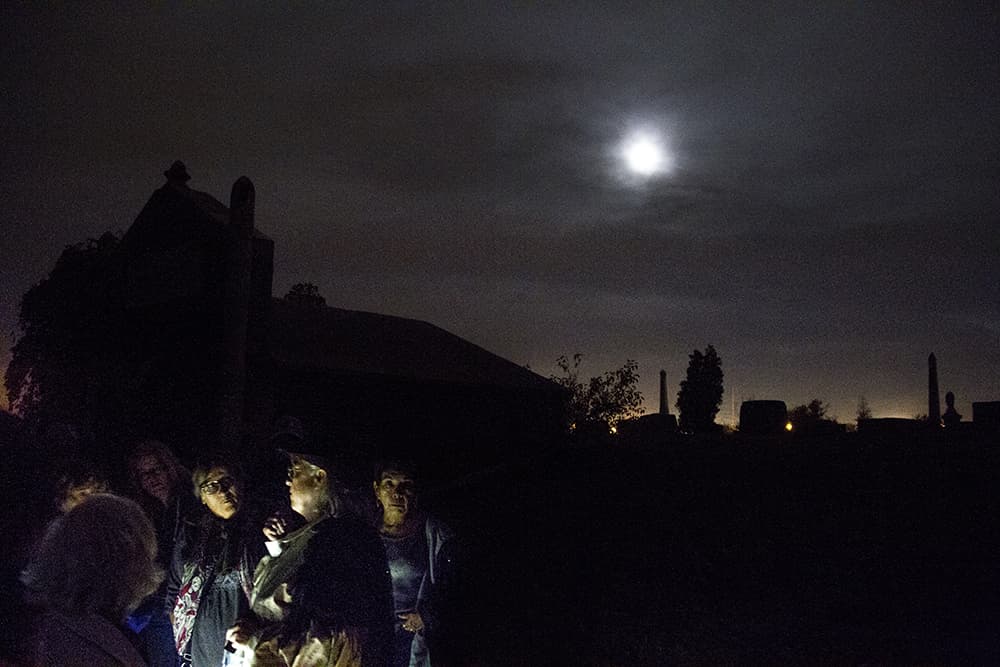
Horner, who is also a professional clown in addition to being a professional historical tour guide, is a vault of knowledge about Denver history. She's gleaned all this insight in her tenure as a longtime Denver resident, as well as her job with the Fairmount Heritage Foundation, which hosts all kinds of events, from these tours to photo walks (and there's one tomorrow at Riverside).
Here are three stories from Horner's tour:
The Denver Strangler
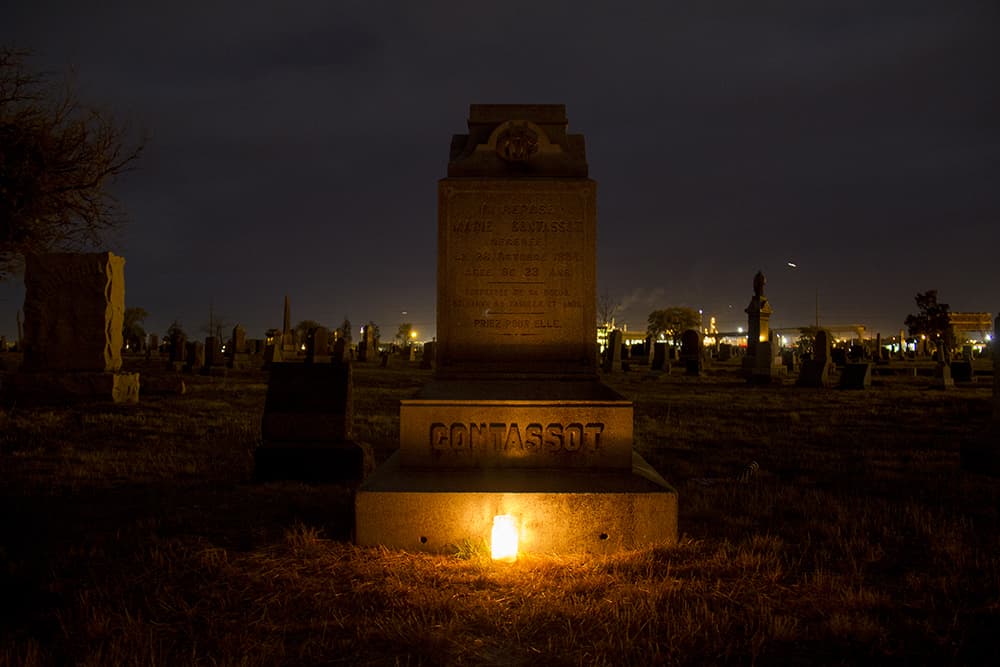
As the group wanders into the darkness they approach a rather large monument that reads, in French, "We regret the loss of our sister, all of her family. And friends. Pray for her."
The recipient of this elaborate stone was Marie Contassot, a prostitute who was strangled on Market street in October of 1894. She was the second victim of three such murders downtown.
"September, October, November," says Horner, "boom, boom, boom."
The murders were never solved.
The two other ladies are also buried at Riverside, but their resting places are marked with modest stones. Contassot, on the other hand, had a wealthy boyfriend and family who paid for this massive memorial that once included a large, beautiful angel. But twice the figure was vandalized, toppled from its perch, and has not since been repaired.
Horner is suspicious of this. "Why did somebody vandalize this one?" And twice, to boot. "Why'd they pick this one?"
Denver's First Duel
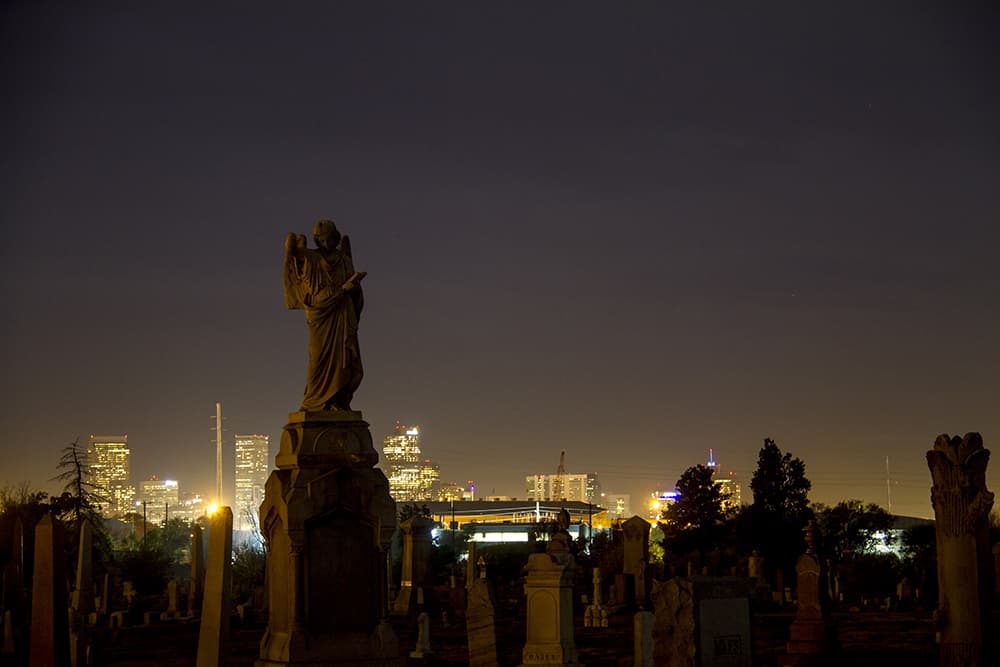
Another angel-clad monument, this one with a missing forearm, stands out among the rest. It is the grave Denver founding father Richard Whitsitt, a merchant who dealt in gold dust and was a member of the Denver City Company, a team of speculators who began early development in anticipation of future population boons.
At that time Auraria was a separate city and the location of the only post office in the area.
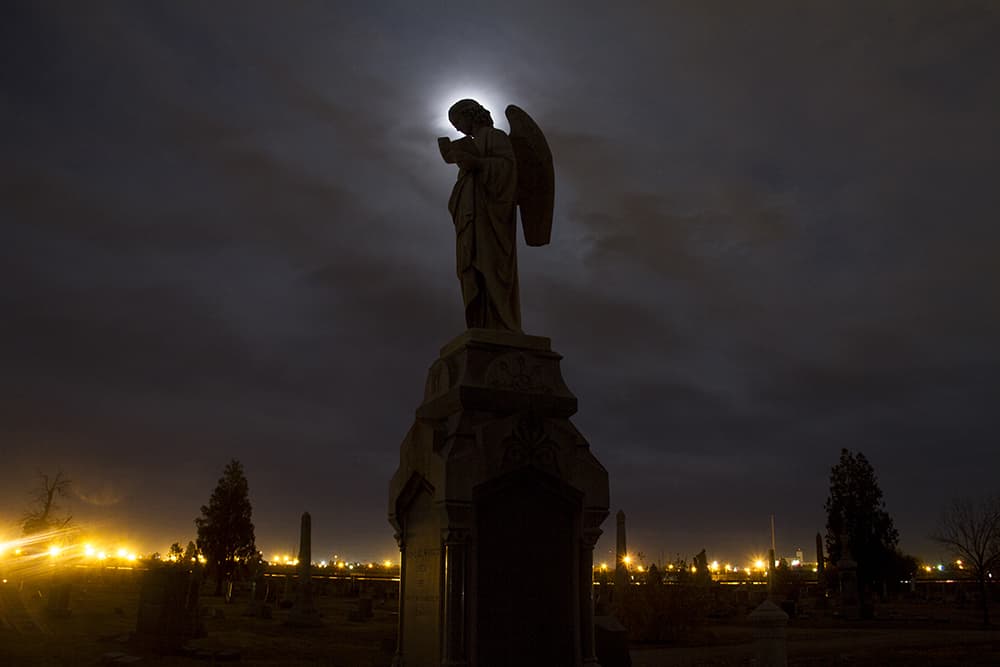
According to city historian Raymond Thal, Whitsitt became wild with paranoia that W. P. McClure, the Auraria post master, was opening his letters and reading his mail. His fury resulted in a feud that led McClure to challenge Whitsitt to the city's first duel.
"He was shot in the groin," Horner told her group. "His comment was: 'I'm hit!"
But Whitsitt hit his mark too, and both men were badly hurt in front of an estimated 200 people. They both recovered.
The sad story of the family Bell

"There's four children buried there. If anyone wants to take a picture this is where to take it," says Horner as the group passes by a cluster of stones flickering with candle light.
The graves belong to the four Bell children who fell victim to smallpox in the late 1800s. One grave, which used to sport a stone rocking horse, read "This lovely lad, so young and fair, called home by early doom, just came to show how pure a flower in paradise could bloom."
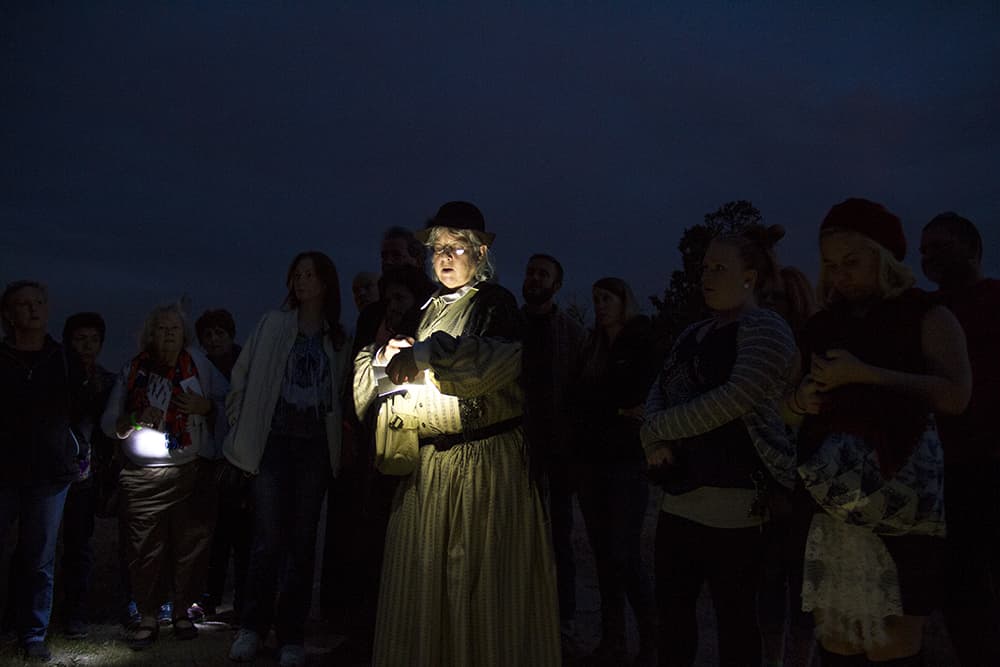
Now, Horner deals in facts. During the tour she refuses to answer questions to which she doesn't know the answer, and similarly avoids any talk of superstition. But the Bells are different.
People who take photos of the skyline-backed graves, says Horner, "get their pictures back and they see things in their pictures. I'm not lying."
On a windless day, she says, the crematorium door slammed shut while she sat with the vandalized remains of the stone rocking horse.
"I felt like someone knew I was there," she says.

Though the cemetery is kind of hellish, girded by flaring flames and a brimstone stench from the nearby Suncor refinery, Horner sticks to the non-paranormal for the most part. "I love to read and I love to learn," she says, "and that makes me want to share with people."












